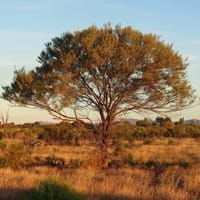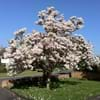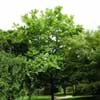Life Span
Perennial
Perennial
Origin
Northeastern United States, Mid-Atlantic United States, Southeastern United States, Central United States
Australia
Types
Ardis, Arnold, Aureomarginatum
Not Available
Habitat
Bluffs, low mountains, Moist Soils, Woodlands
Scrubs, tussock grasslands, Upland savannas
USDA Hardiness Zone
5-9
10-11
Sunset Zone
1a, 1b, 2a, 2b, 3a, 3b, 4, 5, 6, 7, 8, 9, 10, 11, 12, 14, 15, 16, 17, 18, 19, 20, 21, 22, 23
8, 9, 12, 13, 14, 15, 16, 17, 18, 19, 20, 21, 22, 23, 24
Habit
Pyramidal
Upright/Erect
Flower Color
Orange, Light Yellow
Lemon yellow
Flower Color Modifier
Bicolor
Bicolor
Fruit Color
Lime Green, Brown
Gray Green
Leaf Color in Spring
Green, Light Green
Blue Green
Leaf Color in Summer
Green
Blue Green
Leaf Color in Fall
Yellow, Light Yellow, Yellow green
Blue Green
Leaf Color in Winter
Not Available
Blue Green
Leaf Shape
Irregular
Long Narrow
Plant Season
Spring, Fall
Spring
Sunlight
Full Sun, Partial Sun
Full Sun
Type of Soil
Clay, Loam
Loam, Sand
The pH of Soil
Acidic, Neutral
Acidic, Neutral, Alkaline
Soil Drainage
Average
Well drained
Bloom Time
Late Spring
Spring, Late Winter
Tolerances
Soil Compaction
Drought
Where to Plant?
Ground
Ground
How to Plant?
Seedlings
Seedlings
Plant Maintenance
Low
Medium
Watering Requirements
Do Not over Water, Keep the ground moist but not water-logged, Requires regular watering
Do not water excessively
In Summer
Ample Water
Lots of watering
In Spring
Moderate
Moderate
In Winter
Average Water
Average Water
Soil pH
Acidic, Neutral
Acidic, Neutral, Alkaline
Soil Type
Clay, Loam
Loam, Sand
Soil Drainage Capacity
Average
Well drained
Sun Exposure
Full Sun, Partial Sun
Full Sun
Pruning
Prune ocassionally, Remove dead branches
Remove dead or diseased plant parts, Requires little pruning
Fertilizers
All-Purpose Liquid Fertilizer, fertilize in spring, Fertilize the soil instead of direct applying, Mulch
All-Purpose Liquid Fertilizer, No fertilizers needed
Pests and Diseases
fusarium canker, nectria canker, yellow-poplar weevil
Insects, Root rot
Plant Tolerance
Soil Compaction
Drought
Flower Petal Number
Not Available
Single
Foliage Texture
Coarse
Fine
Foliage Sheen
Matte
Matte
Attracts
Birds
Butterflies
Allergy
Not Available
Asthma, Eye irritation, Headache, Nose Irritation, Throat itching, Vomiting
Aesthetic Uses
Showy Purposes
Showy Purposes
Beauty Benefits
Not Available
Not Available
Environmental Uses
Shadow Tree, Shelter for wildlife
Air purification, soil stabilisation
Medicinal Uses
Arthritis, Digestion problems, Fever, Inflammation, Wounds
Not Available
Part of Plant Used
Whole plant
Flowers, Sap, Seeds
Other Uses
Food for animals, Grown for shade, Used as Ornamental plant, Used in Furniture
Used as a dye, Wood is used fore making tools
Used As Indoor Plant
No
No
Used As Outdoor Plant
Yes
Yes
Garden Design
Feature Plant, Shade Trees, Street Trees
Shade Trees, Street Trees
Botanical Name
LIRIODENDRON tulipifera
ACACIA aneura
Common Name
Tulip Poplar, Yellow Poplar
Mulga, True Mulga
In Hindi
ट्यूलिप पेड़
Mulga
In German
Tulpenbaum
Mulga
In Spanish
árbol de tulipán
Mulga
In Greek
δέντρο τουλίπα
mulga
In Portuguese
árvore de tulipa
Mulga
In Polish
tulipanowiec
Mulga
In Latin
Tulipa arbore
Mulga
Phylum
Tracheophyta
Magnoliophyta
Class
Magnoliopsida
Magnoliopsida
Order
Magnoliales
Fabales
Family
Magnoliaceae
Fabaceae
Genus
Liriodendron
Acacia
Clade
Angiosperms, Magnoliids
Angiosperms, Eudicots, Rosids
Tribe
Not Available
Not Available
Subfamily
Not Available
Not Available
Number of Species
Not Available
Season and Care of Tulip Tree and Mulga Tree
Season and care of Tulip Tree and Mulga Tree is important to know. While considering everything about Tulip Tree and Mulga Tree Care, growing season is an essential factor. Tulip Tree season is Spring and Fall and Mulga Tree season is Spring and Fall. The type of soil for Tulip Tree is Clay, Loam and for Mulga Tree is Loam, Sand while the PH of soil for Tulip Tree is Acidic, Neutral and for Mulga Tree is Acidic, Neutral, Alkaline.
Tulip Tree and Mulga Tree Physical Information
Tulip Tree and Mulga Tree physical information is very important for comparison. Tulip Tree height is 1,830.00 cm and width 1,070.00 cm whereas Mulga Tree height is 550.00 cm and width 370.00 cm. The color specification of Tulip Tree and Mulga Tree are as follows:
Tulip Tree flower color: Orange and Light Yellow
Tulip Tree leaf color: Green and Light Green
Mulga Tree flower color: Lemon yellow
- Mulga Tree leaf color: Blue Green
Care of Tulip Tree and Mulga Tree
Care of Tulip Tree and Mulga Tree include pruning, fertilizers, watering etc. Tulip Tree pruning is done Prune ocassionally and Remove dead branches and Mulga Tree pruning is done Remove dead or diseased plant parts and Requires little pruning. In summer Tulip Tree needs Ample Water and in winter, it needs Average Water. Whereas, in summer Mulga Tree needs Lots of watering and in winter, it needs Average Water.





